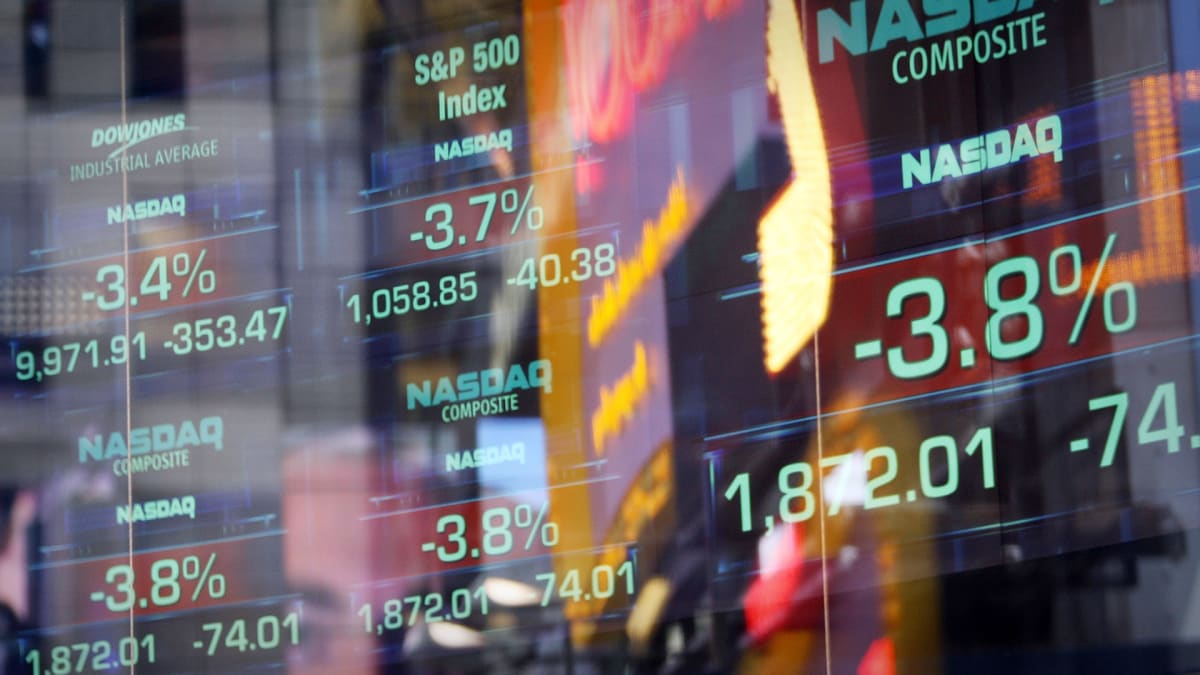
U.S. stocks turned lower Tuesday, while Treasury yields dipped and the dollar gave back recent gains against its global peers, as markets expressed concern that lawmakers on both sides of the aisle may vote to reject the proposed debt ceiling deal over the coming days.
President Joe Biden and House Speaker Kevin McCarthy were both working hard to bring recalcitrant lawmakers on board Tuesday, after agreeing terms to a deal that could effectively trigger between $650 million and $1 trillion in spending cuts over the next ten years in exchange for a two-year increase in the nation's $31.4 trillion debt ceiling.
With Congressional rules dictating lawmakers need at least 72 hours to read and analyze any particular bill, the earliest the House is expected to vote on the proposals will be Wednesday, with the Senate following shortly after.
Markets Aren't Convinced, But Ready To Believe
Heading into the middle of the trading day on Wall Street, the S&P 500 was marked 0.17% lower on the session at 4,199 points while those linked to the Dow Jones Industrial Average slipped 0.46%, or 152 points, to the downside.
The tech-focused Nasdaq was looking at a modest 0.18%, or 24 point advance thanks in part to pre-market gains for chipmakers such as Nvidia (NVDA), big tech stocks like Apple (AAPL) as well as a solid early advance for Tesla (TSLA).
The House of Representatives Rules Committee will formally consider the bill, known as the 'Fiscal Responsibility Act', at 3 pm eastern time Tuesday.
Should the bill clear that early hurdle, however, full approval from the House itself isn't completely assured, with several lawmakers expressing disappointment with reported terms of the agreement, including moderate Democratic Congressman Jim Himes of Connecticut and Republican Matt Rosendale of Montana.
McCarthy Needs GOP On Board
McCarthy will need as many GOP House members on his side as possible, and can only afford to lose a handful votes before his slim nine seat majority is tested, as markets assess the public comments of lawmakers such as Cory Mills, Nancy Mace and Dan Bishop that suggest they're opposed to the deal.
Still, investors were cautiously optimistic that the deal could find enough support to pass, with traders marking 1-month Treasury bills around 80 basis points lower in New York trading at 5.272%, a move that reflects a significantly reduced risk of 'technical default' on debts coming due shortly after the Treasury Department's revised June 5 'x-date' deadline.
Benchmark 2-year Treasury note yields eased 7 basis points to 4.484% while 10-year notes fell 5 basis points to 3.702%. The U.S. dollar index, which tracks the greenback against a basket of six global currencies, was marked 0.11% lower at 104.130 after hitting a two-month high of 104.531 in the overnight session.
"Even if this was a tiny probability event to begin with, it'll allow markets to focus on the more important debate: whether the Fed is indeed done with its hiking cycle," said ING strategist Antoine Bouvet. 'U.S. rates will quickly look past the deal and turn their attention to the Treasury's task of rebuilding its cash buffer at the Fed."
Perhaps more importantly for markets, the debt ceiling deal in its current form neither includes enough spending cuts not to tip the economy into recession -- Ian Shepherdson of Pantheon Macroeconomics says it only takes 0.2% from 2024 GDP -- nor add to the specter of faster, fiscally induced inflation.
Jobs Data Key To Next Rate Move
That's left bets on a near-term Fed rate hike largely focused on incoming data, including Friday's May jobs report.
Investors now pricing in a 60% chance of yet another rate hike from the Fed on June 14, thanks in part to data showing stubbornly high core inflation levels and a pick-up in housing activity, and this week's assessments on the strength of the job market could prove crucial to cementing the current market forecasts.
The Labor Department will publish job openings data for the month of April on Wednesday at 10:00 am eastern time, with ADP's national employment report following at 8:15 am eastern time on Thursday.
Friday's non-farm payroll report for the month of May is slated for 8:30 am eastern time on Friday, with analysts looking for job growth to slow notable from April, with 180,000 new positions created and monthly average hourly earnings easing to 0.4%.
"Last week showed us the economy is still robust, the labor market is tight, and inflation is sticky - all factors that increase the likelihood of additional Fed rate hikes," said Chris Larkin, managing director for trading and investing at E*TRADE from Morgan Stanley. "We may soon find out whether the bulls still have some gas left in their tank."







